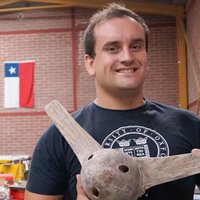Computer & electronics hardware
Qing Cao
His inventions are helping IBM in its decade-plus quest to replace silicon transistors with more efficient carbon nanotubes.
Photos by Jackson Krule

Europe
Jordina Arcal
Eating disorders, obesity and childhood psychosis can be controlled with her health apps

Latin America
Emilio de la Jara
Isolated communities can gain access to cheaper, sustainable energy thanks to his hydraulic system

India
Roopam Sharma
Manovue by Roopam Sharma is meant to replace the braille language and the cane and will open up the smartphone market to the visually impaired.

Latin America
Julio Fajardo
Anyone can produce their own bionic prosthesis for less than 500 dollars with a 3D printer

